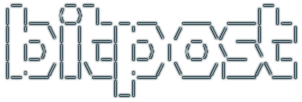I have a couple of urls that have become quite attractive to spammers as of late, for some stupid reason. Stupid in that most situations involving spam are stupid, as the inefficiencies would make anyone of any intelligence balk at the very concept. But still, many desperate and immoral thugs persist.
My urls that appear to make spambots salivate with misguided hope are those that allow anonymous users to add content that will be later displayed to others. Specifically, there are two:
- anonymous trac ticket creation
- wordpress comments
Both trac and WordPress have fantastic tools that fight spam (Akismet, for one, is priceless). These tools prevent tons of spam on my sites every day. But thanks to mindless bots, the spam, while pretty much always unsuccessful in creating tickets due to Akismet and captcha, can morph into the DOS category. I was getting 5 apache requests every second, 24×7.
I started using mod_evasive to stop the flood, which certainly helped. But it did not break the spambots to the point where they gave up. I was dealing with some seriously inept and overzealous spambotting – I don’t even have heavily trafficked sites. What recourse is left if you just. keep. getting. mindlessly. hammmered!?
I got out the big gun and decided that, in the case of my trac ticket site, it was better to just move the whole damned url. The ticket site is a part of a larger site devoted to my music player project, and valid users should really navigate through the top site anyway. It took me a while to decide this was best. It’s certainly not optimal for supporting a site that might be heavily bookmarked by end users. It’s kind of out of the box thinking. But in my case it was worth the cost.
For trac, it was just a matter of a couple trac.ini and apache config changes, and then changing the referring websites.
trac.ini:
[trac]
base_url = https://mysite.com/mynewurl
apache conf:
WSGIScriptAlias /mynewurl /var/lib/trac/apache/trac.wsgi










